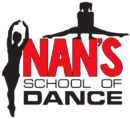Learn How to tell what your body is saying
Dance is a physically demanding activity. Like any other sport that is physically demanding, injuries can occur. There are two different categories of injuries: traumatic injuries and overuse injuries. Traumatic injuries are injuries that occur unexpectedly. Overuse injuries occur from overuse of a muscle or ligament and when a dancer does not give themselves enough time for the body to rest and recover. Dancers, dance teachers, and parents of dancers should be aware of common injuries that can occur as well as the best way to prevent them from happening.
Common Dance Injuries
Due to the physical demands of dance, there is the risk of a dancer sustaining an injury. Here are some of the most common injuries:
- Ankle strains and sprains (are the most common traumatic injury for dance)
- Stress fractures of the spine, shin bone, and foot
- Arthritis in the knee, hip, foot or ankle
- Runner’s knee (patellofemoral pain syndrome)
- Hip bursitis, hip flexor tendonitis and other hip injuries
How To Prevent Dance Injuries
The good news is that many dance injuries can be prevented! Here are some guidelines to follow while taking dance lessons. These tips can keep your feet, ankles, hips and knees healthy:
- Exercise: Building muscle strength is the key to preventing traumatic dance injuries. Pilates and yoga are very helpful for building core muscles and hip strength. To help improve stamina, dancers can try aerobics or activities like biking and swimming.
- Warm up and stretch: Stretching before you dance will help loosen up your body and can prevent pulling a muscle during your lesson.
- Wear the proper dance shoes: Having the correct size is very important when buying dance shoes. If you have any questions about your shoes ask your instructor for help.
- Avoid overtraining: It is very important for dancers to give themselves adequate rest. Give your body a chance to recover! If you do have an injury- do not dance. Take time off to heal properly before returning to the dance floor.
- Stay Hydrated and Eat Well: Staying hydrated helps your muscles recover. It is also important to eat well, a proper diet can help your training.
First Aid: How To Treat Dance Injuries
If you do suffer an injury it is important to seek the right help. The treatment will vary depending on the type of injury. Here are some options:
- Ice packs: Ice is best for treating sudden traumatic injuries because it reduces swelling. Apply ice in 10 to 20-minute intervals a few times a day to help with pain and swelling.
- Athletic tape: When wrapped around your foot or ankle, athletic tape can help ease chronic pain from overuse injuries and allow you to keep dancing.
- Elastic bandages: These provide compression while resting following an injury.
- Topical pain reliever: For muscular or joint pain, apply a cream designed to penetrate and relieve the aching area.
Want to Read More About Dance?
Take a look at some of our other articles about dance.
So why choose Nan’s school of dance?
We offer instruction in Ballet, Tap, Jazz, Contemporary, Hip Hop, Acro, and Pre-Dance, at all levels. We love having new members in our dance classes. We will help get your child acclimated to our dance school and make them feel right at home. When your child attends Nan’s School of Dance, they will become a part of our dance family and share in our love for dance!
Don’t forget to register!
From ballet to hip hop, we offer dance classes for ALL ages and skill levels in a variety of styles. We place students in classes that will challenge them while offering a fun atmosphere for learning and growth. We also offer Mommy & Me classes, (18 months – 2.5 years). Register online or Give us a call at 919-803-6044 to hold your spot!
